
Born
April 01st, 1889
Passed Away
June 21st, 1940
Popularly Known as
Doctorji
Occupation
the founder of the Rashtriya Swayamsevak Sangh (RSS)
Religion
Hindu
Native
Kundakurti
धर्मज्ञो धर्मकर्ता च सदा धर्मपरायणः ।
तत्त्वेभ्यः सर्वशास्त्रार्थादेशको गुरुरुच्यते ॥
धर्म को जाननेवाले, धर्म मुताबिक आचरण करनेवाले,
धर्मपरायण, और सब शास्त्रों में से तत्त्वों का आदेश करनेवाले गुरु कहे जाते हैं ।
Shradhanjali By
Tarunbhai Vyas
Biography of Dr. Keshav Baliram Hedgewar
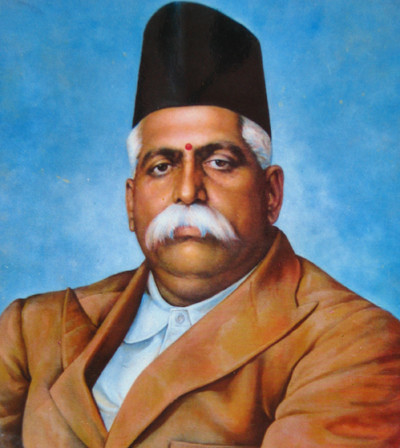
Keshav Baliram Hedgewar (April 1, 1889 – June 21, 1940) was the founder of the Rashtriya Swayamsevak Sangh (RSS). Hedgewar founded the RSS in Nagpur, Maharashtra in 1925, with the intention of promoting the concept of the Hindu nation. Hedgewar drew upon influences from social and spiritual Hindu reformers such as Swami Vivekananda, Vinayak Damodar Savarkar and Aurobindo to develop the core philosophy of the RSS.
He went to Kolkata to pursue a degree in medicine. After successful completion, Hedgewar was drawn into the influence of secret revolutionary organisations like the Anushilan Samiti and Jugantar in Bengal. He was also a member of the Hindu Mahasabha till his death. Hedgewar was imprisoned for sedition by the British government in 1921 for a year and again in 1930 for nine months. After his spell in prison he instructed the RSS to remain aloof from political activities including the Salt Satyagraha (1930) and continue mainly as a social organisation.
Early life and career
Dr. Hedgewar was born in 1889 on the Hindu New Year. He hailed from a Deshastha Brahmin family which was originally from Kundakurti, a small village in Bodhan taluka near the border of Maharashtra and Andhra Pradesh states. Near this village, the rivers Godavari, Vanjara and Haridra meet to form a Triveni sangam.
Hedgewar was educated by his elder brother. After matriculating, he decided to go to Kolkata to study medicine. He was sent to Kolkata by Dr. B. S. Moonje in 1910 to pursue his medical studies and unofficially learn the techniques of fighting from the secret revolutionary organisations like the Anushilan Samiti and Jugantar in Bengal. He immediately joined Anushilan Samiti and had contacts with revolutionaries like Surya Sen. He came to believe that although the revolutionaries had immense determination, in a country of continental proportions it was impossible to instigate an armed insurrection. After completing his graduation, he returned to Nagpur, disillusioned with the armed movement. In his memoirs, the third chief of RSS, Balasahab Deoras narrates an incident when Hedgewar saved him and others from following the path of Bhagat Singh and his comrades.
In Nagpur, Hedgewar became involved with social work and also with Tilak faction of the Congress Party, through which he developed a close association with Dr Moonje who later became his Mentor of Hindu Philosophy. In the 1920 session of Indian National Congress was held in Nagpur, Dr Hedgewar was appointed as the Deputy Chief of volunteers cader overseeing the whole function. This volunteer organisation was named as Bharat Swayamsewak Mandal which was headed by Dr. Laxman V. Paranjape (Dr. Hedgewar as his Deputy). All volunteers were told to wear Military type uniform (to be made at their own expense) which was later on adopted as RSS's official uniform from 1925 to 1940. This could be called as the real beginning of RSS because Dr L. V. Paranjpe had declared the intention of starting such an organisation in future. Dr B. S. Moonje and Dr. L. V. Paranjpe funded and actively supported Hedgewar to start RSS as the Top Senior Hindu Mahasabha Leaders of Nagpur region.
Background of RSS
Hedgewar slowly came to the conclusion that all the problems he felt the Hindu community in India faced - subjugation and oppression by 'foreigners' in the present and past, provincialism, and untouchability - were a result of an inherent flaw in the Hindu character rather than problems themselves. He felt a remedy was a cultural organisation that would unite Hindus on a common platform and instill among them discipline and national character. In this endeavour, he was blessed by Vinayak Damodar Savarkar, who was then under house imprisonment in Ratnagiri.
Inception of RSS
The Rashtriya Swayamsevak Sangh (RSS) first met in 1925 in a small ground in Nagpur with 5-6 persons on Vijaya Dashami. The basic element of RSS was to be the Shakha (branch) in every town/village, where swayamsevaks were to perform drills, exercise and chant slogans on an open ground everyday for an hour.
His initial followers included Appaji Joshi, Bhaiyyaji Dani,Babasaheb Apte, Gopal rao Yerkuntwar,Dada rao Parmarth,Balasaheb Deoras,Yadav Rao Joshi ,Bhaurao Deoras,Moreshwar Munje, K.D.Joshi ,Raja Bhau Paturkar,Bapu rao Bhishikar,Abaji Hedgewar,Madhukar rao Bhagwat, Viththal Rao Patki, Bapu Rao Diwakar and K.S.Patait.
"Words fail to describe the depth of that pure and selfless love. The boundless affection of the mother's heart, the sleepless care and diligence of the father and the inspiring guidance of the guru found their culmination in that single bosom. I for one feel it my proud privilege to worship him as my ideal. The worship of such a soul transcends the worship of an individual and becomes the worship of the ideal itself. He is verily my chosen deity", says Sri Guruji Golwalkar, in a glowing tribute to Dr. Keshav Baliram Hedgewar.
Dr. Hedgewar said often, "Even if the British leave, unless the Hindus are organised as a powerful nation, where is the guarantee that we shall be able to protect our freedom?" His words have proved to be prophetic. Conjointly with Independence, parts of Punjab, Bengal, Sindh and the frontier-areas were sundered from Bharat; and, four and a half decades after the nation's attaining freedom, Kashmir remains a thorn in the flesh.
Birth and early life
Dr Hedgewar, the founder of the RSS was born on Ugadi day [New Year's Day] in 1889 at Nagpur. He was a born patriot. Even when he was studying in primary school, he refused to eat sweets distributed on the occasion of the 60th anniversary of the coronation of Queen Victoria on June 22, 1897. Surprised at this stance, his elder brother asked him, “Keshav, didn’t you get the sweets?” Keshav answered, “of course, I got it. But, our Bhonsle dynasty was liquidated by these Britishers. How can we participate in these imperial celebrations?”
when as a child he stepped into the primary school and listened to the story of Shivaji, that great Hindu redeemer became his chosen hero. When he was studying in Neel City High School, Nagpur, he was rusticated for singing "Vande Mataram" in violation of the circular issued by the then British government. As a result he had to pursue his high school studies at Yeotmal.
Once happened that Keshav had to accompany Abaji to the house of one Jakatdar in Bhandara. Among those present there was Amritrao bambawala, the Assistant Commissioner. After the introductions, jakatadar said, “Keshavrao is not at all interested in studies. He is spoiling his future by participating in student movements.” Amritrao felt pity for keshav. He affectionately called Keshav near him and advised: “Keshav, you are too young to understand things. These activities will land you in trouble in future. Listen to me, and stay away from politics. Such activities are not for students.” Keshav calmly replied, “Sir, I am ready to quit politics as advised by you. In that case, it is but proper that elders and learned persons like you should give up your jobs and jump into the political arena. Until that happens, students like me have no alternative except to take part in politics, even at the cost of our studies if need be.” Amritrao, of course, had no answer to this logical rejoinder.
The renowned revolutionary, Nalini Kishore Guha, introduced Keshav and Narayanrao Savarkar, younger brother of Veer Savarkar, into the Anusheelan Samity, a secret revolutionary organization, and according to the practice of the organization, they were administered a pledge and given secret names. Keshav was given the name 'Cocaine' and he became well known among the revolutionary workers because of his fiery patriotism, courage, deep intellectual capacities and foresight. Doctor of the Nation After passing the L.M.&S. Examination in June 1914, Keshav completed one year apprenticeship and returned to Nagpur in 1915 as a doctor. But his mind did not turn to the direction of practice and earning livelihood. He wanted to diagnose the disease that had afflicted the nation and cure it, and with this determination in his mind he dedicated his life at the altar of the Motherland. Since his arrival in Nagpur, Dr. Hedgewar was busy organizing the revolutionary youth in Nagpur, with the help of Bhaoji Karve. Dr. Hedgewar kept close links with the revolutionary organizations in Punjab and Calcutta.
Preparations for Revolutionary Upsurge
When the First World War broke out, the revolutionaries all over the country wanted to make use of the opportunity created by the difficult situation in which the Britishers were pitched against the Germans. The revolutionaries in India and abroad conceived a plan for a revolutionary upsurge in the country to throw out the Britishers. Dr Hedgewar also threw himself heart and soul into the endeavour. The revolutionaries under the leadership of Bhaoji Kavre and Dr. Hedgewar were collecting arms and money for the proposed uprising. Once, in order to secure arms for the Gadar soldiers spread in different parts of the country, Dr. Hedgewar put on a military uniform and under the guise of a military man, managed to get away with a stock of British guns kept in Nagpur railway station. He also entrusted to one of his trusted colleagues, Vamanrao Dharmadhikari, the work of receiving arms reaching Goa port in 1912 in a steamer sent by revolutionaries abroad. But the British Government got scent of the scheme and the ship was seized before it could reach its destination. Analysis of the Causes of Failure The defeat of Germany in the War foiled all the attempts of the Indian revolutionaries for a revolutionary upsurge inside the country.
In the National Movement
Dr. Hedgewar realized that the lack of discipline among the revolutionaries, want of proper organization to coordinate the different revolutionary groups spread all over the country and the absence of a political and national awakening among the common masses were the root causes for the failure of revolutionary upsurge. He also came to understand that mere acts of bravery and self-sacrifice on the part of a few daring and patriotic individuals will not bring independence to the country. With this clear realization, Dr. Hedgewar diverted his attention to the national movement launched by the Indian National Congress.
He participated in the freedom struggle under the leadership of the Indian National Congress and participated in the Non-cooperation Movement of 1921 and was jailed. He was released on July 12, 1922. In the National Movement Dr. Hedgewar's sterling character, untainted devotion to the cause of the country, undiluted patriotism, self-effacing sacrifice and amiable nature made him dear to all the leaders of the nationalist movement in Central Province and he soon rose to a top position in the Congress organization. At that time, the Congress in Central Province was in the hands of staunch supporters of Tilak. The extremist and nationalist leaders in the Congress were all looking with apprehension at the all-out support given by Mahatma Gandhi to the Khilafat movement in an attempt to exploit the discontent among the Indian Muslims against the British who were enemies of the Khalif of Turkey, the religious head of Muslims. Dr. Hedgewar, with his deep foresight, understood that this sort of appeasement of Muslim communalism, though intended to win them over to the freedom struggle, would in the long run sow the seeds of separation in the hearts of the Muslims and result in the disintegration of the country. And his fears did prove to be true in the long run.
Important incidence after which Dr. Hedgewar created a History
On 26th December, 1920, the Congress session began with Sri Vijayaraghavachari as President. A significant event took place in the session. Sri Bade moved in the AICC meeting a resolution for cow protection. In the name of maintaining Hindu-Muslim Unity, Gandhiji not only opposed the move, but even forced Sri Bade to leave the meeting and brought the meeting to an abrupt end. This incident did create a lasting impression on the mind of Dr. Hedgewar about the disastrous consequences of the slogan of Hindu-Muslim unity and the Muslim appeasement policy of Gandhiji and the Congress.
Founding of RSS
After making an in-depth study of our history, he came to the conclusion that lack of patriotism and disunity among the Hindus was the reason for our defeat at the hands of foreign invaders and enslavement under foreign rule. He, therefore, felt that unless a sense of patriotism, selflessness, sterling character, national consciousness and sense of unity, selfless service, self-realisation and discipline were inculcated in a substantial number of individuals, it would be impossible to uplift the nation and secure political freedom.
He, therefore, decided to start a unique organisation to solve the problems. He took a vow to remain a bachelor and devote his entire life and energy to the aforesaid noble cause. For this purpose, he founded the "Rashtriya Swayamsevak Sangh" on Vijayadashami day September 27, 1925. He evolved a unique technique which was unprecedented, simple and inexpensive. He selected a group of young boys who would assemble in an open field every day for one hour. During that time, in addition to playing national games, he began to inculcate in them a sense of patriotism, unity, discipline, love for the country and selflessness, by singing of patriotic songs and narration of stories of patriots. He appealed to the youth to spare one hour a day for the Nation by attending the Shakha (the meeting). He visualised that the one hour programme in the Shakha would ultimately transform the youth to devote greater time and energy in the service of the nation. He, therefore, undertook the Himalayan task of organising the Hindus, who despite having a common cultural bond and fundamental unity had come to be divided into various castes, religions, regions and language groups.
Dr Hedgewar never used to impose his ideologies on others. In fact, for naming of Sangh, Doctorji arranged a baithak in his house on April 7, 1926 where 26 persons participated. Three names were suggested after elaborate discussions. They were: 1. Rashtriya Swayamsevak Sangh (RSS); 2. Jaripataka Mandal; 3. Bharatoddharak Mandal. The name RSS was finally decided upon.
Bharat Mata as common deity
Dr Hedgewar felt that it was necessary to have a common deity to be worshipped by all and a common ideal which all should strive to achieve and a common prayer (mantra) for all. He declared that irrespective of castes, religions and languages, etc, we are all children of Bharatmata who shall be the common deity to be worshipped by all of us and the common ideal of all shall be to strive for all-round progress and development of the nation and for taking the nation to the pinnacle of glory. These two ideals were incorporated in the common prayer to be sung by all the members at the Shakha every day. The first line of the prarthana says "Namaste Sada Vatsale Matrubhume"Oh my beloved motherland salutation to theeand the last line of the prayer says "Oh God, please give us strength and bless us to enable us to take our nation to the pinnacle of glory" (param vaibhavamnetu metat swarasthram) and concludes with the all unifying slogan "Bharat Mata ki jai" (Victory to Bharat Mata). Having decided about the common deity to be worshipped, common ideals to be achieved, a common prayer to be made and the common slogan, Dr. Hedgewar started contemplating on who should be placed in the position of Guru.
Doctorji’s idea behind starting the Shakha
Doctorji also said that one hour Shaka was to initiate Swayamsevaks to inspire them to dedicate themselves to the noble and onerous task of nation building. But moulding of character of swayamsevaks was a whole time job after shakha hours to be performed by the Karyakartas of the RSS. He advised and encouraged swayamsevaks to undertake higher education and for that purpose to go to different places in the country. He said higher educational attainment by Karyakartas would confer better suitability and capacities to spread the work of the RSS and going to different places was necessary to spread the work of RSS throughout the country.
Deciding National Flag
There was much ignorance and misunderstanding about our national flag ever since the beginning of the national movement in our country. From 1906 to 1921, different organizations had adopted different types of flags as our national flag. In the Karachi session of the Congress, a seven member committee consisting of Sardar Patel, Jawaharlal Nehru, Pattabhi Sitaramayya, Dr. Hardikar, Kaka Kalelkar, MasterTara Singh and Moulana Azad was formed to recommend a national flag.
This committee recommended an orange colour flag. The working committee's approval was needed for the adoption of the flag. Dr. Hedgewar, who feared that this flag might not get the approval of those who were raising slogans of Hindu Muslim Unity, persuaded Lokamanya Bapuji Ane to strongly support the recommendation of the flag committee. He also went to Delhi, stayed in Bapuji Ane's house and met other members of the working committee. But his efforts did not completely meet with success. The Congress adopted a tri-colour flag. However, in the place of red in the earlier flag, orange was selected and it was taken to top with white and green strips below. Dr. Hedgewar felt very sorry that though the saffron flag has been the symbol of our national culture and heritage since times immemorial, and the Rashtriya Swayamsevak Sangh had also adopted the same as its flag, the Congress chose a national flag suited to the interests of certain individuals and groups.
Legacy
On the morning of June 21, 1940, Dr. Hedgewar's condition turned from bad to worse. The doctors attending on him decided to perform lumber puncture. Dr. Hedgewar knew that his end was nearing. Before undergoing the lumber puncture, he called Sri Guruji Golwalkar and some other important workers of the Sangh by his side and expressed his last wish that, after him, Sri Guruji Golwalkar should takeover the responsibility of the Sarsanghchalak of the Sangh. Unto Eternal Rest the efforts of the doctors to save the life of Dr. Hedgewar proved futile. On 21st morning his temperature rose to 106o and the doctors gave up hope. Dr. Hedgewar breathed his last at 9-15A.M. on that day. A glorious life which, like a flame, burnt itself silently, but shed warmth and light all around, ebbed away. Though he left his mortal coil, his spirit still lives in the hearts of millions of Swayamsevaks all over the country and abroad, who march ahead on the path shown by him to attain the goal of Hindu Rashtra.
Dr Hedgewar’s Last message to Swayamsevaks
His message to the dedicated Swayamsevaks of the Sangh echoes and re-echoes in millions of hearts: "The flower of youth should be offered at the feet of the Mother when it is in full bloom shedding its fragrance and beauty all round. After it has lost its beauty and fragrance, that dry and withered flower is unfit for worship"?
Remarks on Legendary Dr. Hedgewar by a great historian Professor G.C.Asnani
Persons like Hedgewar do not come every day. Once in a way, they appear on the horizon, take a position unconventional for their times, but bold and brave. The cowards, the cheats, and the envious ones cannot stand their presence, because their own position is in jeopardy; they find some excuse to eliminate them if possible. That was the position of Dr. Hedgewar and his organization known as RSS till today, which the Congress and the Secularists can not tolerate till today. Who stands condemned, RSS or Congress? In my view, Congress stands condemned. At one stage, Congress was the ideal organization for many of us including myself; now it has lost all its respectability and is in the dying stage. But that is the fate of many organizations that have come and gone on this Earth; Congress is no exception. This is the Rule of life...
Bharat Mata as common deity
Dr Hedgewar felt that it was necessary to have a common deity to be worshipped by all and a common ideal which all should strive to achieve and a common prayer (mantra) for all. He declared that irrespective of castes, religions and languages, etc, we are all children of Bharatmata who shall be the common deity to be worshipped by all of us and the common ideal of all shall be to strive for all-round progress and development of the nation and for taking the nation to the pinnacle of glory. These two ideals were incorporated in the common prayer to be sung by all the members at the Shakha every day. The first line of the prarthana says "Namaste Sada Vatsale Matrubhume"Oh my beloved motherland salutation to theeand the last line of the prayer says "Oh God, please give us strength and bless us to enable us to take our nation to the pinnacle of glory" (param vaibhavamnetu metat swarasthram) and concludes with the all unifying slogan "Bharat Mata ki jai" (Victory to Bharat Mata). Having decided about the common deity to be worshipped, common ideals to be achieved, a common prayer to be made and the common slogan, Dr. Hedgewar started contemplating on who should be placed in the position of Guru.
Bhagwadwaj as Guru
It is well known that in our culture the highest place is given to the Guru and he is regarded as equal to God. It is the Guru who with the instrument of his intellect and wisdom opens the eyes of his disciples and enables them to proceed from darkness to light. Therefore, every year the people worship their Guru on Guru Poornima day. Dr Hedgewar wanted to choose a Guru befitting the divine task of national reconstruction.
What Dr Hedgewar did is comparable only to what Guru Govind Singhji did in respect of Sikhism, who put an end to a human person being a Guru and substituted the Guru Granth Sahib in place of a living Guru.
After founding the RSS, he announced that the members have to perform guru pooja on the specified day and offer gurudakshina which alone shall be the financial resource of the Sangha. The Swayamsevaks began to think as to who could be installed in the position of Guru other than Dr. Hedgewar himself. But on Guru Poornima day there was a surprise. Dr Hedgewar declared that Bhagwadwaj under whose auspicious presence Shakhas were being held every day shall be the Guru. He stated that Bhagwadwaj represents our glorious history and cultural heritage. It reminds us of Sri Rama, Sri Krishna and Gitopadesha and also reminds us of great empires like the Maurya, Gupta, Vijayanagara, etc. It also represents the gurus of all religions and religious sects born in the country. It reminds us of Mahavira, Buddha, Shankara, Basava, Tiruvaluvur, Ramanuja, Madhwa-charya, Guru Nanak, Guru Ramdas and Vidyaranya under whose guidance the great Vijayanagara empire was established. It also represents those who fought valiantly to protect the freedom and honour of motherland such as Maharana Pratap, Chatrapati Shivaji, Guru Govind Singh and Rani of Jhansi. Further it also represents our cultural heritage, all good values of life of great heroes and saints. More than all the saffron colour of Bhagwadwaj has been the symbol of sacrifice.
He said he was not in favour of placing any human being in the place of Guru, as it is quite possible that on account of some pitfall or shortcomings in him, which is natural in human beings the followers might get disappointed or frustrated at some point of time. He also indicated that he was placing Bhagwadwaj, which represents the noble ideals of the RSS in the place of Guru as he desired that there should be "tatvanishta" (loyalty to ideals) and not "vyaktinishta" (loyalty to any individual).
What Dr Hedgewar did is comparable only to what Guru Govind Singhji did in respect of Sikhism, who put an end to a human person being a Guru and substituted the Guru Granth Sahib in place of a living Guru. Thus Guru Govind Singh transformed an inanimate object into a powerful Guru who is guiding the entire Sikh community. Similarly, Dr Hedgewar transformed Bhagwadwaj an inanimate object into guru. He said it is only after a Bhagwadwaj is presented to a shakha after it is well established that it becomes a recognised shakha and that only after hoisting the Bhagwadwaj in a Shakha, activities of national learning commence and all functions of RSS commence.
Metamorphosis through shakha
In order to transform an ordinary individual into an extraordinary patriot ready to sacrifice everything in the service of the motherland and in order to completely erase selfishness, ego and divisive factors such as high and low castes, rich and poor, he invented a simple inexpensive technique called Shakha, a method of get-together for one hour at a specified place and time every day. His appeal was simple in that he asked the youth to spare one hour out of 24 hours for the Nation. Accordingly, he attracted a handful of youths for attending Shakha which was comparable to ancient Gurukulas. Shakha programmes were such as would bring about an all-round development of an individuals i.e. physical, mental, moral and intellectual. Physical fitness through physical activities solely comprising of national games and physical exercises, character building, inculcating patriotism through stories of heroes, saints social reformers, etc, as also through patriotic songs and intellectual development through periodic Bhaudhiks. The whole process was called Samskara. Important aspect of programmes of Shakha has been to treat Bharatmata as the common deity, Bhagwadwaj as the common Guru and Sangha prarthana as the common mantra for all the swayamsevaks. Through this methodology Doctorji sought to demolish all fissiparous tendencies afflicting the nation. The prarthana contains an oath by every swayamsevak that he will lay down his life in the service of the nation. There is also a prayer to God to confer invincible physical strength and excellent character and finally blessings of almighty is sought to enable them to take the motherland to pinnacle of glory.
Doctorji also said that one hour Shaka was to initiate Swayamsevaks to inspire them to dedicate themselves to the noble and onerous task of nation building. But moulding of character of swayamsevaks was a whole time job after shakha hours to be performed by the Karyakartas of the RSS. He advised and encouraged swayamsevaks to undertake higher education and for that purpose to go to different places in the country. He said higher educational attainment by Karyakartas would confer better suitability and capacities to spread the work of the RSS and going to different places was necessary to spread the work of RSS throughout the country.
Gandhiji and Dr.ji
In 1934 at Wardha, Gandhiji had the following conversation with Dr. K. B. Hedgewar, the founder of the R.S.S.:
Gandhiji: Doctor Saheb, what made you start an independent organisation like the Rashtriya Swayamsevak Sangh? You were in Congress and surely you could have built up such a voluntary body in the Congress itself. By the way, did you feel dearth of funds in the Congress?
Hedgewar: Oh, no, not at all. Fact is, that creation of the kind of Swayamsevaks I had in mind, was simply not possible through the Congress.
Gandhiji: Why so?
Hedgewar: Because, the Congress, after all, is a political party and its volunteers are just boys of errands, arranging chairs and tables, saluting and cheering the leaders, looking to their arrangements and such other sundry jobs, whereas my concept of a Swayamsevak is altogether different.
Gandhiji: What is your concept, Doctor Saheb?
Hedgewar: One who offers himself, voluntarily in the cause of national upliftment in a spirit of total selflessness - such a person alone is a Swayamsevak. I also believe that, it is only on the strength of such Swayamsevaks, that our nation can ultimately rise to its full glory.
Family Tree of Dr. Keshav Baliram Hedgewar


Baliram Hedgewar
Post a tribute & share memories
Fond Memories & Remembrance
Related Profiles
Post Condolences



 Profile Home
Profile Home Biography
Biography Family
Tree
Family
Tree Photo
Album
Photo
Album Video
Video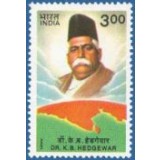
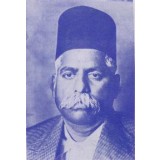
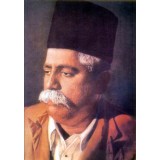
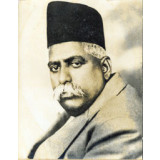
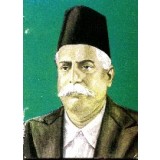
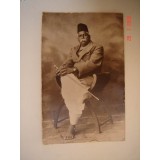
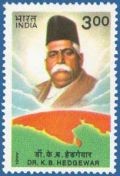



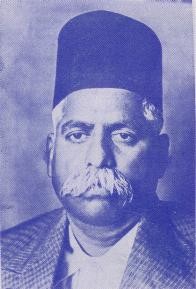
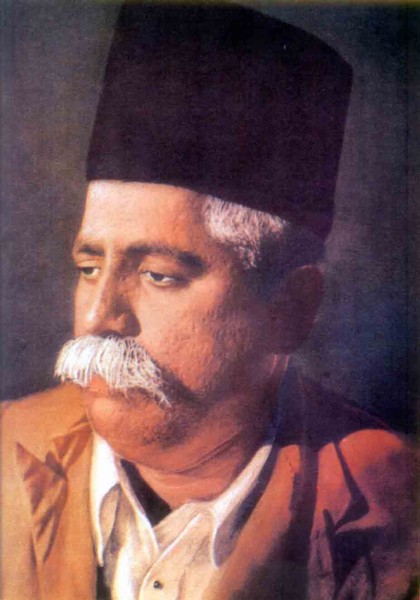
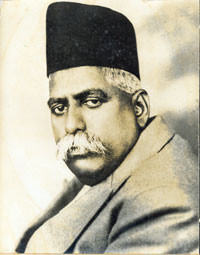
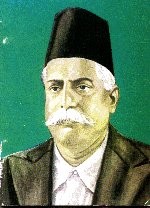
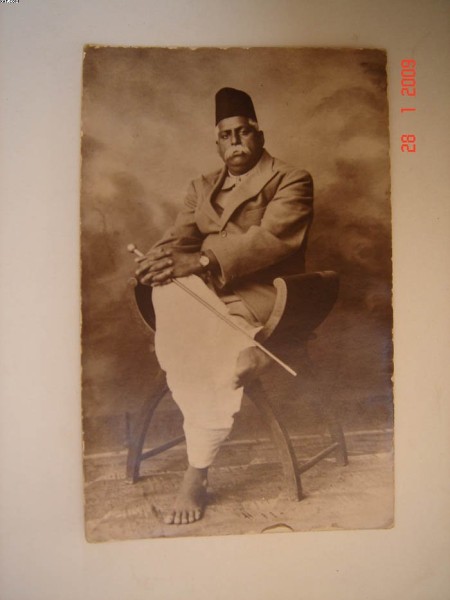

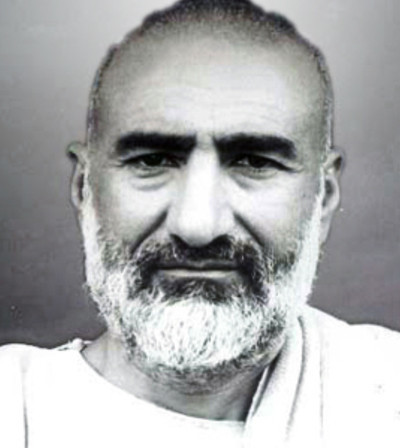
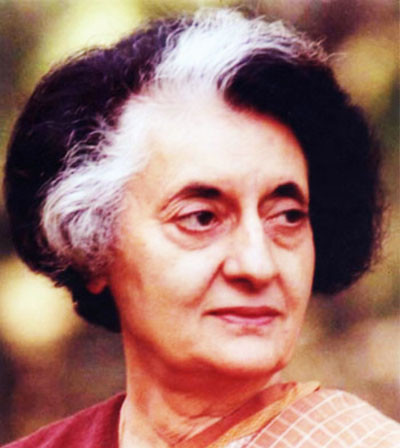
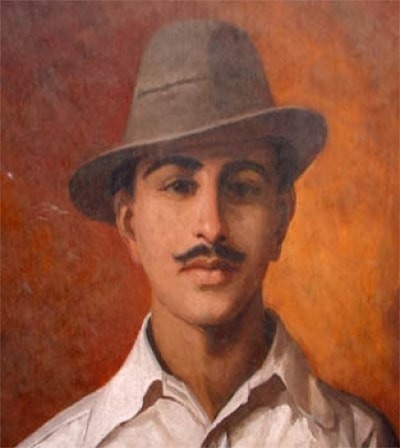
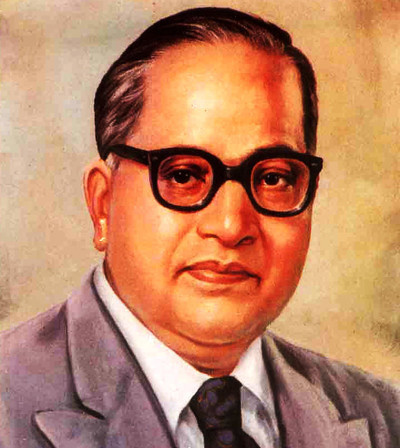
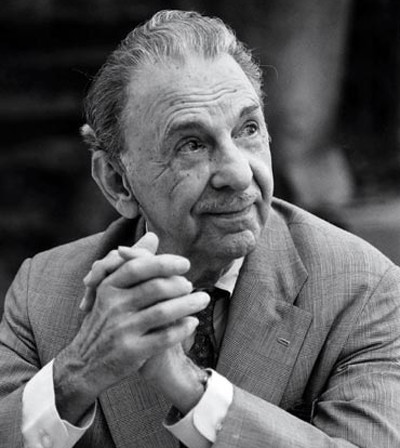
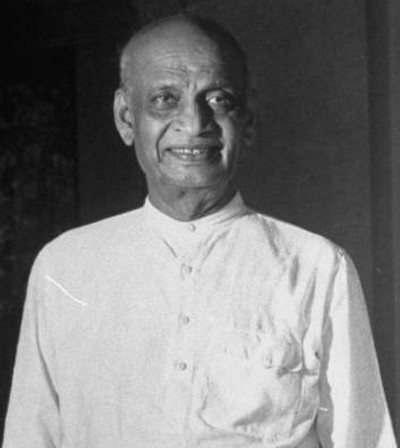
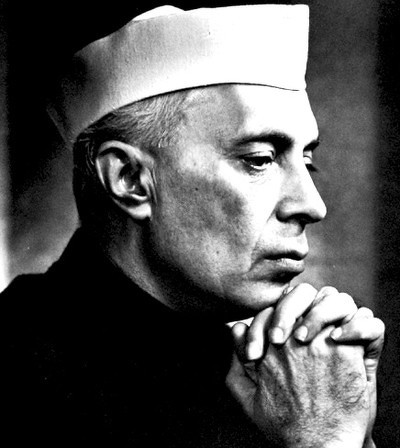
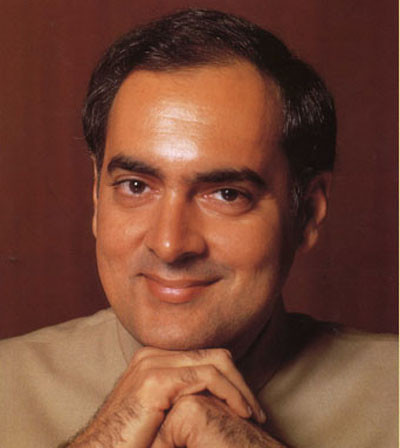
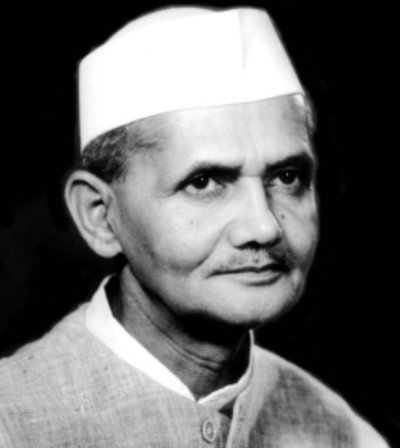

RAVINDRA MURUGKAR
9 months ago
sin
3 years ago
Bhavesh Bhatt
13 years ago
rneibqfm
13 years ago
Aleksandar
13 years ago